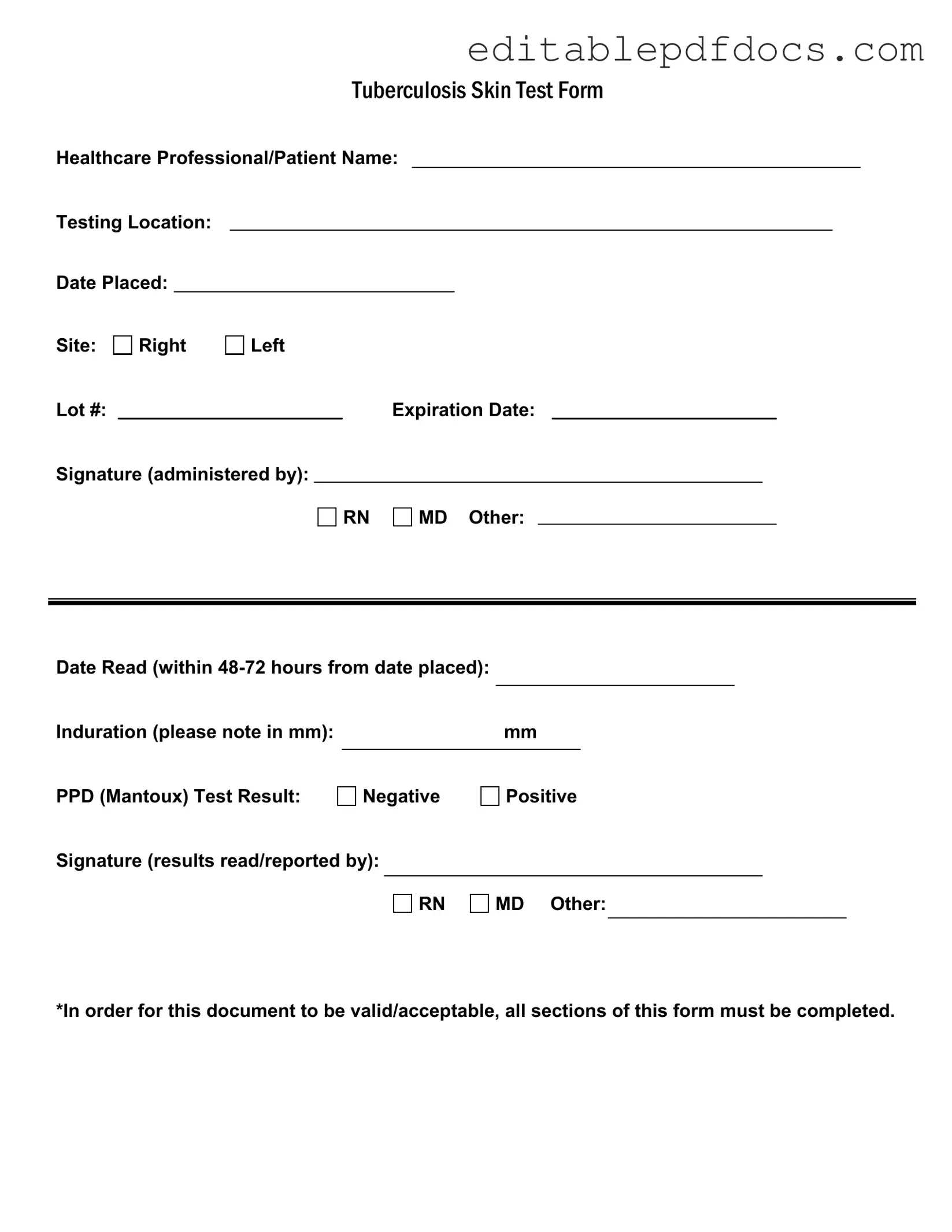When filling out the Tuberculosis (TB) Test form, many people make common mistakes that can lead to delays or complications. One frequent error is leaving out important personal information. The form requires your name and the name of the healthcare professional. Omitting these details can render the form incomplete.
Another mistake is not specifying the testing location. This section is crucial for tracking the test and ensuring that results are properly attributed. Without this information, it may be difficult for healthcare providers to verify the test.
Many individuals also forget to include the date placed and the date read. These dates are essential for determining the validity of the test results. Remember, the test must be read within 48 to 72 hours of placement, so accurate dates are necessary.
Some people mistakenly check the wrong site for the test placement. It’s important to indicate whether the test was done on the right or left arm. This detail helps healthcare providers know where to look for the induration.
Another common oversight is neglecting to record the induration measurement in millimeters. This measurement is vital for interpreting the results. If it’s missing, the healthcare provider may not be able to determine whether the test result is positive or negative.
Individuals sometimes forget to note the lot number and expiration date of the PPD solution used. These details are important for quality control and ensuring that the test is valid. Without them, the results may be questioned.
When it comes to signing the form, some people fail to provide the signature of the healthcare professional who administered the test. This signature is a key part of the documentation process and ensures accountability.
Another mistake is not indicating who read the results. The form requires the signature of the person who interpreted the test results, whether it’s an RN, MD, or another qualified individual. This step is critical for maintaining the integrity of the results.
People may also overlook the requirement that all sections of the form must be completed. Incomplete forms are often rejected, which can lead to unnecessary delays in receiving test results.
Finally, it’s essential to double-check the entire form before submission. Simple typos or errors can lead to confusion. Taking a moment to review the form can save time and ensure that the test results are processed smoothly.
